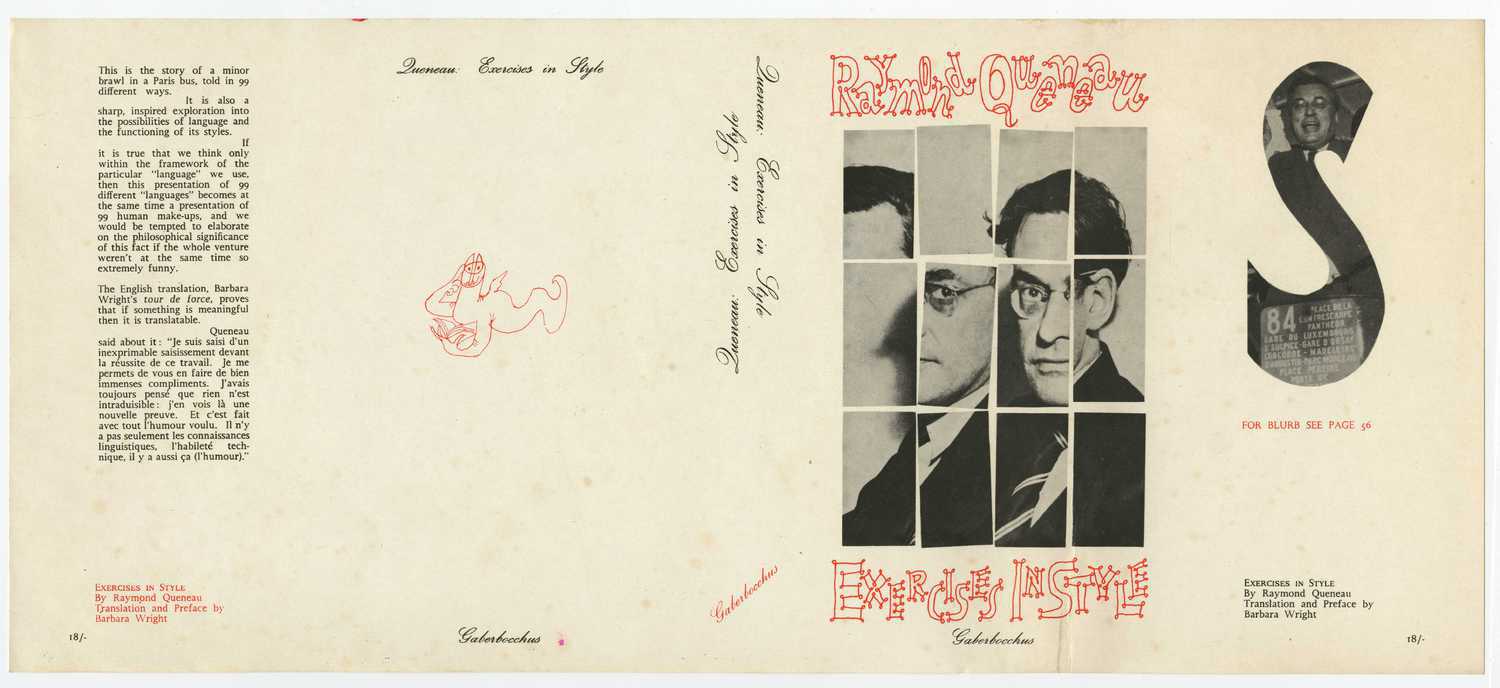Exercises in Style
Called “one of the most brilliant jokes which have appeared since the war," Queneau’s Exercices de style emerged in 1947. Wright’s “witty, playful, ingenious” translation of the text was first published by John Calder in 1958, followed by its American publication by New Directions in 1981 and a revised edition from OneWorld Classics Limited in 2009. Though some critics attacked the work as “an attempt to ‘destroy’ literature," the Académie des Goncourt was “so impressed it elected Queneau to membership,” a mark of approval reflected in its translated counterpart’s numerous re-releases. Each of the 99 exercises in the collection recounts the mundane story of “a fellow in a crowded bus, irritated with his neighbor, seen two hours later with a button missing from his coat,” and each of them follows a different style or theme.
In addition to the alluring challenge of translating a text deemed “untranslatable” by the author himself, the musical foundation and structure of Exercices no doubt intrigued Wright. Each variation, appropriately called an “exercise,” presented a unique set of challenges for the translator, fitting into what might be described as Wright’s life philosophy of using everything as an exercise. In fact, the crossed-out title of Wright’s first notebook related to her translation of Exercices de style reveals that she had originally toyed with the idea of to calling her work Exercises in Translation, a title Sheryl St. Germain echoes in her review of Wright’s translation.
Galley cover of Wright's first translation of Exercises de style, titled Exercises in Style and published by Gaberbocchus Press. Stefan and Franka Themerson, the founders of Gaberbocchus Press and long-time friends of Wright, inspired her transition from music performance to translation.
Galley proofs of Oneworld Classic's reprint of Exercises in Style, the third publication of the translation. Though the colophon claims that the text is "revised edition" of Wright's work, the contents are identical to all previous iterations of Exercises, as Wright strongly rejected the publisher's suggested edits. Wright's refusal to change any aspect of her translation llustrates her earnest belief that her meticulous examination of the original text and Queneau’s wholehearted approval resulted in a translation that faithfully reconstructed the original.
Review of Exercises in Style featuring Wright's notes and corrections. Wright’s assertive defense of her translation, as seen through her protesting notes on this review, reflects her close relationship with Queneau and her thorough, almost “obsessive manner” when it came to her work. While Wright was mentioned in nearly all reviews of Exercises in Style, a nearly unheard-of level of acknowledgement for translators of non-classic works, the majority of the review still rests on the original text, calling the division of recognition into question.



